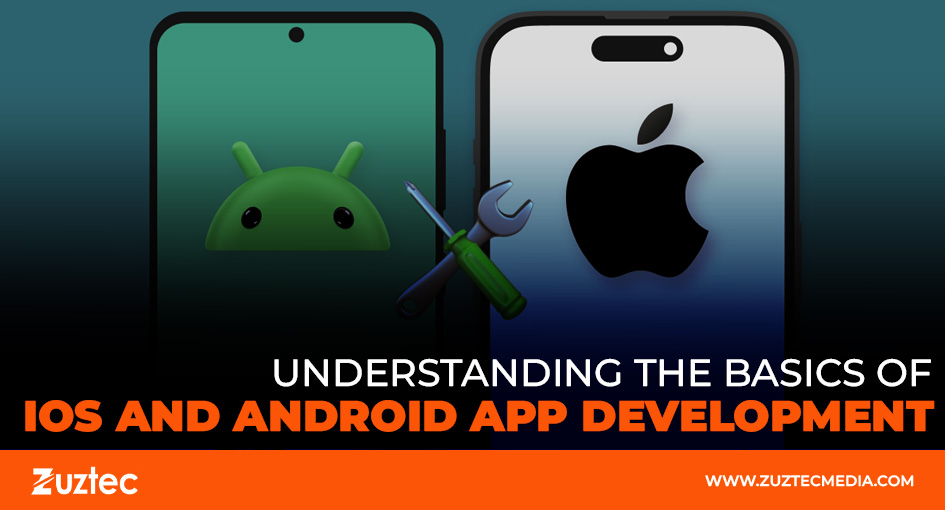
Understanding the Basics of iOS and Android App Development
In today’s digital landscape, mobile applications have become essential tools for business growth, customer engagement, and digital transformation. Whether it’s for entertainment, e-commerce, healthcare, or finance, mobile apps are redefining how users interact with products and services. As more people rely on smartphones for everyday tasks, the demand for mobile apps has exploded. For most businesses, this means building applications compatible with both major platforms: iOS and Android.
Investing in iOS and Android app development ensures your app reaches the widest possible audience. These platforms dominate the mobile market, with Android leading globally and iOS enjoying strong user loyalty, especially in premium markets. Developing for both gives your business cross-platform visibility and access to diverse user segments.
Choosing the right approach to development is critical. Native apps are known for high performance and seamless user experiences, while cross-platform frameworks like Flutter and React Native offer faster development cycles and code reusability.
Whether you’re a startup launching a new product or an enterprise digitizing internal processes, a well-executed mobile app can become your most powerful tool. The key is to understand the nuances of iOS and Android application development and align them with your business strategy from the start.
Why iOS and Android App Development Matters
Making the decision to create apps for both the iOS and Android operating systems entails committing to a wider range of users. In emerging markets, Android is the most popular platform, but iOS users typically spend more on apps and services. By covering both, businesses reduce the risk of alienating one segment and ensure maximum market penetration.
Developing for both platforms requires a clear understanding of each ecosystem. Apple and Google have different design guidelines, programming languages, and app store requirements. iOS typically uses Swift or Objective-C, while Android development relies on Kotlin or Java. This means developers need specialized skills to deliver a high-quality experience on both platforms.
Another important aspect is performance optimization. Well-optimized apps load faster, consume less battery, and provide a better user experience—factors that drive higher retention and ratings.
Tools And Frameworks For Efficient App Development
While native development ensures full control over hardware and OS features, cross-platform tools like Flutter, React Native, and Xamarin have gained popularity for their ability to build apps for both platforms with a single codebase.
Flutter, developed by Google, offers fast rendering and a rich widget library, making it ideal for building visually appealing apps. React Native, backed by Meta, is praised for its strong developer community and seamless integration with native modules. Xamarin, supported by Microsoft, allows code sharing across platforms while maintaining near-native performance.
These frameworks simplify iOS and Android app development, especially for startups and mid-size businesses that need to move quickly and efficiently. However, they may come with limitations in accessing certain native features or customizing performance-heavy apps, so the choice should align with the project’s technical demands.
Version control tools like Git, project management platforms like Jira, and CI/CD tools such as Jenkins also play a role in maintaining code quality and delivery speed. Together, they enable smooth collaboration between developers, designers, and stakeholders across the entire app lifecycle.
Common Challenges In Mobile App Development
Even with the best tools, mobile app development comes with its own set of challenges. One of the biggest is ensuring platform consistency. A feature that works perfectly on Android might not behave the same way on iOS due to differences in design languages and APIs. Testing thoroughly on multiple devices and OS versions is key to avoiding unexpected issues.
Another challenge is keeping up with frequent OS updates. Apple and Google regularly release updates that may affect app behavior or security protocols. Developers must stay current to ensure compatibility and avoid app store rejections.
Performance and user experience are also major concerns. Users expect fast-loading apps with intuitive navigation and minimal bugs. Slow or unresponsive apps are quickly uninstalled. That’s why user testing, analytics tracking, and real-time monitoring are vital parts of the development cycle.
Investing In The Future With Cross-Platform Mobile Apps
Mobile apps are long-term assets that evolve alongside your business. Investing in reliable iOS and Android application development ensures your digital product can grow, adapt, and scale. Whether it’s through feature updates, new integrations, or UI enhancements that apps must stay relevant to remain valuable to users.
Choosing the right development partner is crucial. Look for teams with a strong portfolio, transparent processes, and a commitment to long-term support. A skilled partner will help you navigate each stage—from planning and design to launch and post-release improvements.
Consequently, iOS and Android app development is no longer optional for businesses—it’s a strategic requirement. By embracing both platforms and investing in quality development, companies can stay competitive, meet user expectations, and future-proof their mobile presence.

